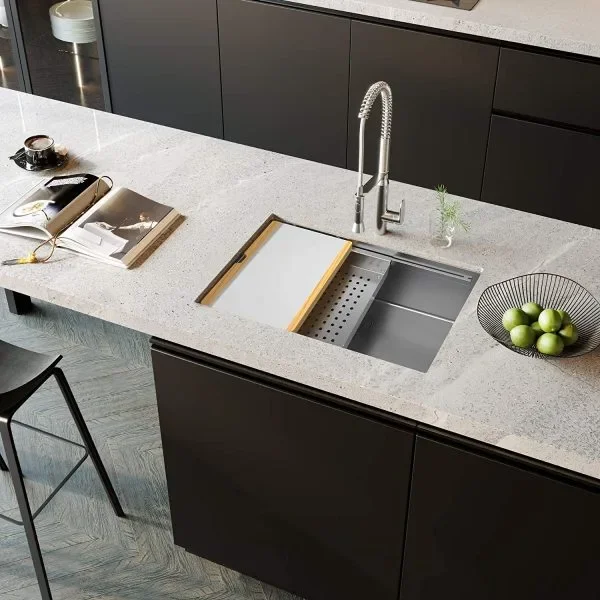
Kitchen sinks are integral parts of every home, as they help manage an endless stream of dirty dishes and messy food preparation tasks.
When replacing a sink, many factors will determine its cost. Here are a few: Material.
Price
Sinks take an incredible beating in the kitchen. From dirty dishes and food preparation chaos, to leaks and unsightly stains – they endure it all without complaining! So it is no wonder that many homeowners seek to upgrade or replace their sink when signs of ageing are apparent or they simply wish for an upgrade.
Kitchen sink replacement costs can vary significantly depending on the style and material chosen for replacement. A stainless steel sink typically costs $200-1,500 while composite and farmhouse style undermount sinks may be more costly options.
No matter the sink type, homeowners should take other home improvement projects into account when installing a new sink to cut costs on installation and labor fees. Plumbing upgrades like new pipes, improved efficiency or changing taps could have an enormous effect on total project costs; geographic location also can influence replacement price due to different materials or labor availability in different regions.
Material
When selecting a kitchen sink, it is crucial to take note of its materials of construction. Some materials can withstand daily usage without showing obvious signs of wear over time, providing more durable options than others.
For sleek contemporary looks and excellent resistance to heat and stains, stainless steel is often the go-to material. But for more traditional or minimalist designs, vitreous china may also be suitable.
Natural stone sinks add a beautiful accent to any kitchen, yet are vulnerable to scratches from sharp or heavy objects dropped into them, needing frequent sealing to keep water out and prevent staining, plus need extra support from cabinets and countertops for durability.
Style
There is an assortment of sink styles available to homeowners that match both personal taste and functionality within their kitchens. For instance, homeowners can find farmhouse sinks crafted from fireclay or stainless steel for a rustic appearance; top-mount or undermount models can fit with whatever countertops are being installed in their homes.
A sink’s cost also depends on its number of basins; single-basin models provide ample room for dishes and cookware storage but lack the partitioned space that double-basin models offer.
Built-in sinks are integrated into countertops, and tend to cost more than their drop-in or undermount counterparts. Furthermore, these installations may require extensive plumbing and cabinetry modifications which adds another cost element to a replacement project. Before making their decision on an integrated or “built-in” style sink replacement purchase decision, homeowners must consider all factors which might impact costs to make an informed purchasing decision that ensures both an affordable and long-term solution is chosen.
Installation
Homeowners tend to think of kitchen upgrades in terms of marble countertops and counter-depth fridges when envisioning upgrades, yet many overlook a simple change such as installing a new sink that can have just as significant an effect.
Sinks are one of the most essential features in any home, used to wash utensils and dishes. Installing one doesn’t have to be complicated either – with proper supplies on hand, anyone can install their own sink in just hours!
As soon as your purchase of a kitchen sink and faucet are made, the next step should be marking its hole on your countertop using the paper template provided by its manufacturer. A jigsaw can then be used to cut it. Finally, once in place the sink can be lowered into place and sealed off using caulk before connecting its supply lines and drain line for optimal results.




